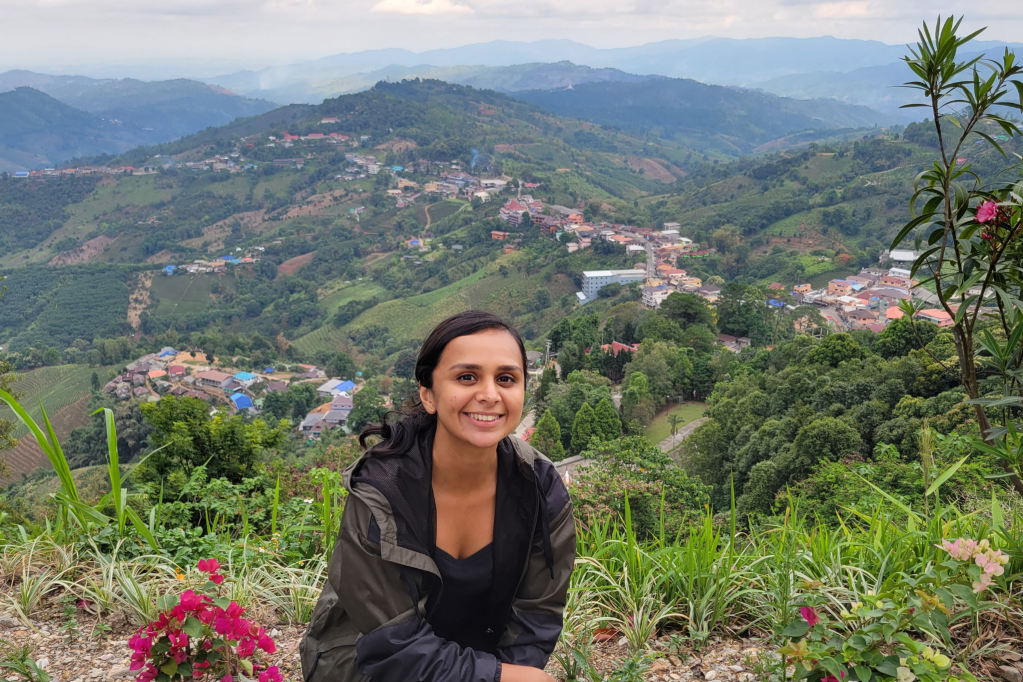
Mona Jhunjhnuwala feels like a household name for many in the tea community, and for good reason. Her infectious enthusiasm and commitment to sharing her story and the culture of tea are felt through her tea business, Teawala. Most recently, she’d taken us with her on a recent trip to Thailand through Instagram Live sessions. I purchased her Thailand Tea Mail set through the Teawala website and after diving into a few of the leaves myself, I knew there was more than just tea to talk about. In this interview, Mona shares the beauty of connecting to one’s heritage, the innovations in tea craft in Thailand, and the heart, strength, and tenacity of the Yunnan-Thai people.
Marco Namowicz: Hi Mona! A great deal has taken place since we last caught up. You’ve been to Thailand, visited the U.S., and are back in Hong Kong. What are the elements of travel you’ve missed most since the pandemic?
Mona Jhunjhnuwala: Hi Marco! Great to catch up with you. As someone who loves to travel, I missed many things: Exploring new places, learning new things, immersing myself in and embracing another culture, tasting new foods, making new friends, and aimlessly wandering. But mostly, I missed tea farm life!
It had been almost three years since my last visit to a tea farm, and I was starting to lose my sense of connection and purpose for what I do. So much about Teawala is centered around the farms, the tea makers, and their craft – It’s their story I’m inspired by and want to share with tea drinkers. Traveling is a privilege and I feel blessed to have visited many wonderful tea farms in Thailand this year.
It was exciting to follow your travels to Thailand through your IG videos! With travel restrictions having eased up and your own family residing in the region, how did you navigate your time with family, exploration, and tea adventures?
Thank you! It was a really fun mix of things to balance. Especially when there was overlap – My dad visited me up in the tea mountains and met the tea makers! It was a joy to show him my world and my passion. It was also a lot of fun seeing him taste the teas and explore the farms. That was a first! We had a blast and I feel like it brought us closer together.
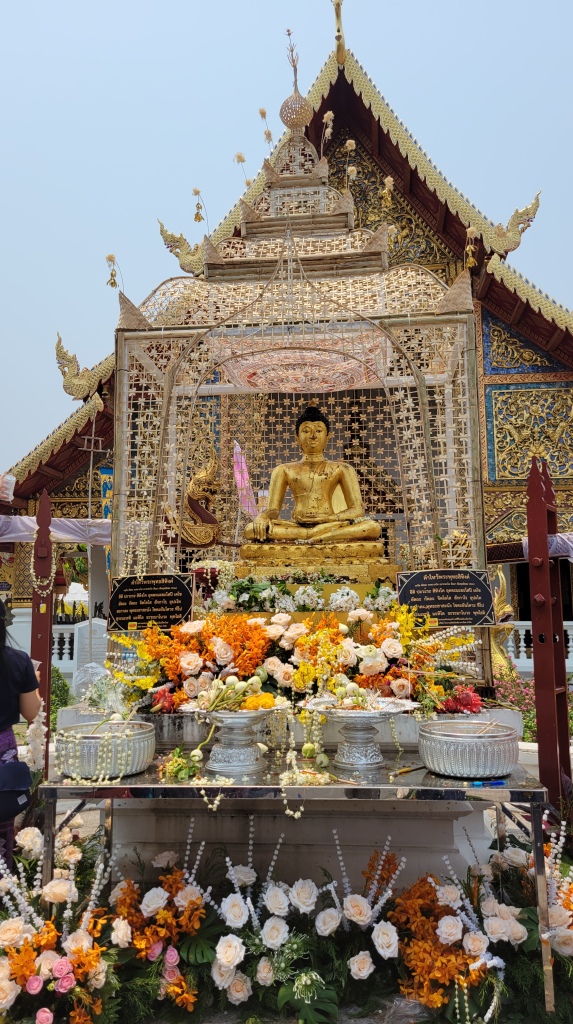
In addition to my few weeks up north in the tea villages, I enjoyed Bangkok city life – eating street food, riding around on the back of a moped, and catching up with friends who lived there or happened to be passing through – as well as a solo trip to Chiang Mai during the Songkran festival (Thai New Year), where I stayed at a hostel and celebrated the new year traditions at the magnificent temples there. We also had some relatives fly in and we spent some relaxing time south by the beach. Thailand is such a beautiful country with so much to offer. You could spend months hopping around from place to place and soaking in the different cultures, foods, landscapes, and vibes. Each part of the trip was unique in its way.
In the tea mountains of Northern Thailand, you visited Wang Put Tan Tea, where the Khiri Gold is from. What is the story behind this beautiful tea?
I’m so glad you love this tea too! The Khiri Gold was the very first tea I was excited about on this trip. The story goes: I met the tea maker’s sister P’ Yee in a Bangkok teahouse through a tea friend P’ Horse who invited me to a community gathering on one of my first days there. Sidenote – In Thai ‘P’ is a respectful and affectionate way to refer to those older than you, like an older brother or older sister.
After one of the meetups, P’ Yee invited me back to her hotel and brewed her brother’s tea, the Khiri Gold, for us while sharing the story of Mae Salong village and her personal experience growing up as a Yunnan-Thai. I loved the tea upon the first sip – with its syrupy honey notes and delicately fruity floral aromas, unlike any other I’d tried – and learning about the history of the Yunnan-Thai people only made this feeling deeper. She had gifted me a canister of it, so I continued brewing and getting acquainted with it while I was in Bangkok.
A few weeks later, after the Songkran festival ended, I traveled up north to Mae Salong and stayed at her family’s farm, Wang Put Tan (as well as the neighboring 101 Tea). At Wang Put Tan, I got to see the stunning mountains where Khiri Gold is grown and hear the story behind the tea from the maker himself, her older brother P’ Nakorn.
Mae Salong is known for growing Taiwanese oolong cultivars, which they brought over from Taiwan in the 80s and 90s, and producing Taiwanese styles of tea – Qing xiang oolong, oriental beauty, osmanthus oolong, and so forth. To establish themselves in the tea industry, P’ Nakorn’s father’s generation had been following the Taiwanese way. However, P’ Nakorn emphasized that after many decades, Thailand’s terroir now has its unique flavors to offer – in particular the honey aroma – and stressed that Thailand would always be one step behind if they only followed in Taiwan’s direction. With the vision of highlighting and paying tribute to his home country, Thailand, he created the Khiri black tea.
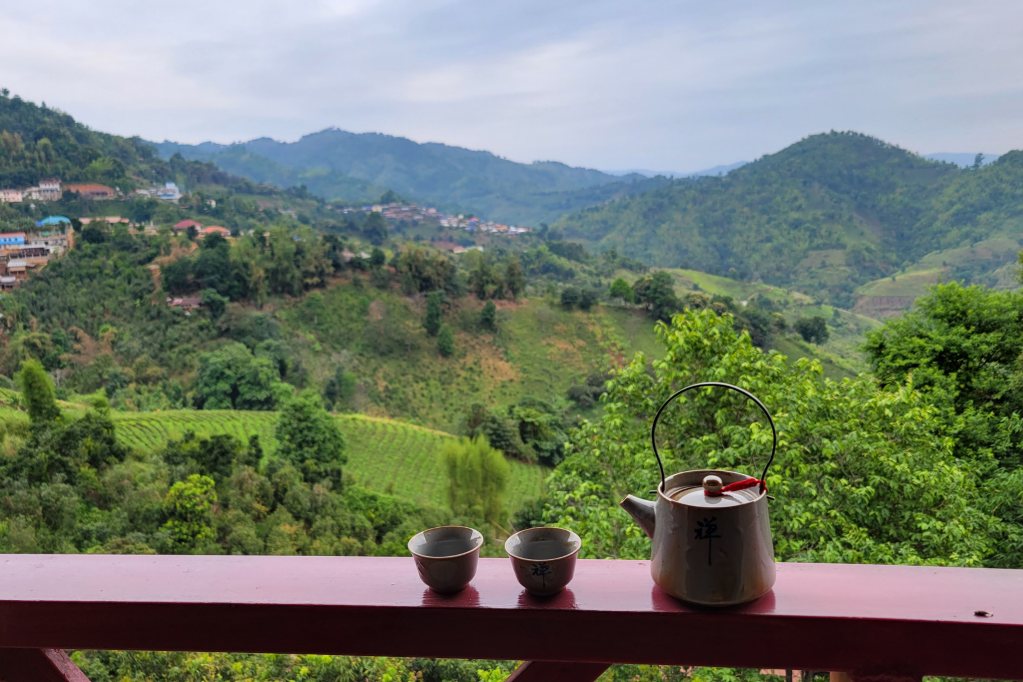
Taking what he felt was the best character from the soils and oolong cultivars of Mae Salong through careful thought and craft, and after many failed experiments, he finally reached a black tea he loved. He named it “Khiri” – Intentionally choosing the Thai word for high mountain, as well as part of the village’s alternative name “Santi Khiri”, meaning peaceful mountain, to honor his home, Mae Salong. He submitted it to a Japanese tea competition and, with much happiness, received a grand gold award for it: A proud moment for their family and the Mae Salong region.
For my naming of the tea, I refer to it as gold for a few reasons: Because of the gold tips on the tea leaves, the gold prize it won, and to reflect the gold color of the Buddhist temple perched atop Mae Salong.
As I understand it, this was your first trip to Thailand traveling solo. What have you learned about yourself through this latest excursion?
My grandmother on my dad’s side (we call her Dadi, the Hindi word for paternal grandmother) is Thai. She grew up in Bangkok and moved to Hong Kong when she married my Indian grandfather. As kids, we would often go to Thailand for family vacations since my dad speaks the language, but this was the first time going there on my terms.
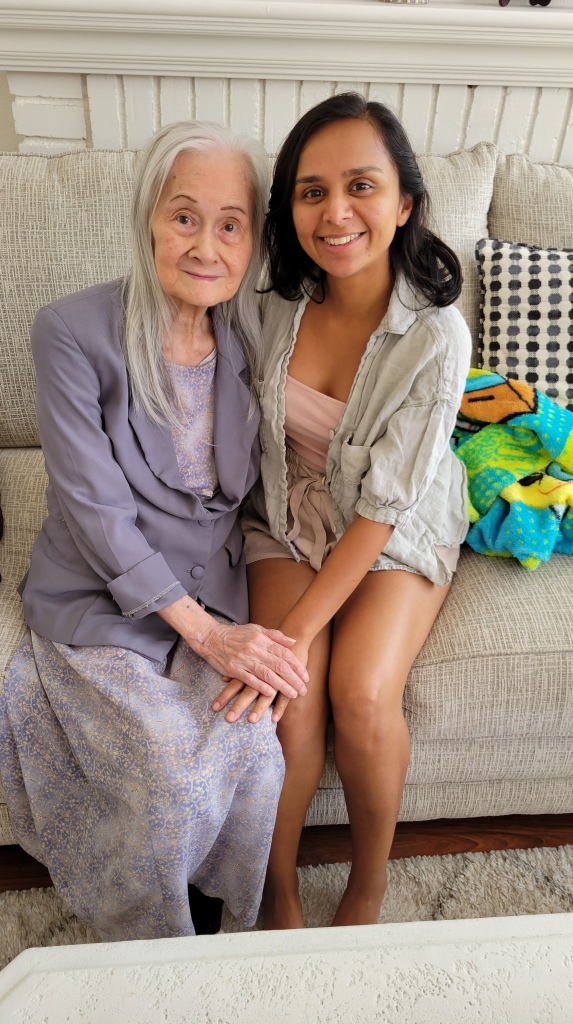
After this trip, I feel more deeply connected with my Thai roots – learning more words in Thai, making local friends, and experiencing my grandmother’s culture first-hand. When I did eventually see my grandmother (who now resides in the US with my relatives) after two years of being apart, it was so special. She lit up when we would talk about Thailand or I would study my language book with her. Nowadays, I try to call her Khunya (the Thai word for paternal grandmother).
What particular memories from your trip to Thailand do you hold most dear?
One of my absolute favorite days of the trip was trekking through the ancient tea tree forest in Doi Wawee, led by tea maker P’ Ammi. We were introduced through Ching Ching, a fellow tea maker from Mae Salong, who kindly arranged the trip, picked me up at the airport, and together we went to Doi Wawee village.
That morning, the five of us ladies – P’ Ammi, Ching Ching, P’ Ammi’s relative and daughter, and myself – woke up at the crack of dawn, ate Yunnan rice noodles (mixian), gathered our wellington boots and tea baskets, and hopped in the back of a pick-up truck. As we departed Wawee village, we drove up the mountain and entered the bamboo forest, passing through streams and eventually into the vast Gushu (ancient tea tree) forest. The open-air drive itself was magnificent, breathing in the fresh forest air, taking in the views, and passing the lush tea trees.
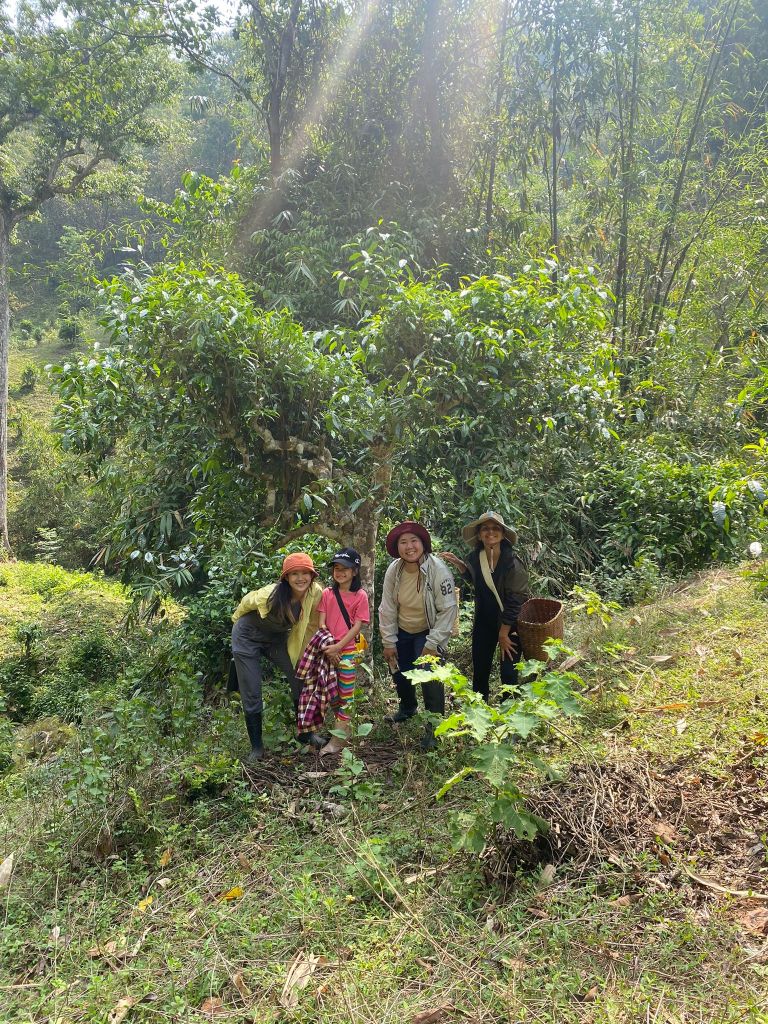
We then hiked through the forest along the streams in our boots, picking tea leaves from the ancient tea trees. It was surreal. Being up and close with these splendid trees and their tender leaves. We even had an encounter with leeches, which though terrifying at the time, was a rather hilarious bonding experience looking back.
After picking tea leaves, we arrived at a beautiful waterfall and enjoyed P Ammi’s gushu white tea together (which I’ve selected and named Siam Silver), went for a dip in the waterfall, and – with the help of one of the tea masters – had an incredible lunch together at the waterfall. He foraged bamboo and put together rocks on the spot (a seriously Bear Grylls moment!!) to prepare the lunch for us that P’Ammi had cooked earlier that morning. It was incredible, and certainly, put a smile on the young daughter’s face after the leech incident.
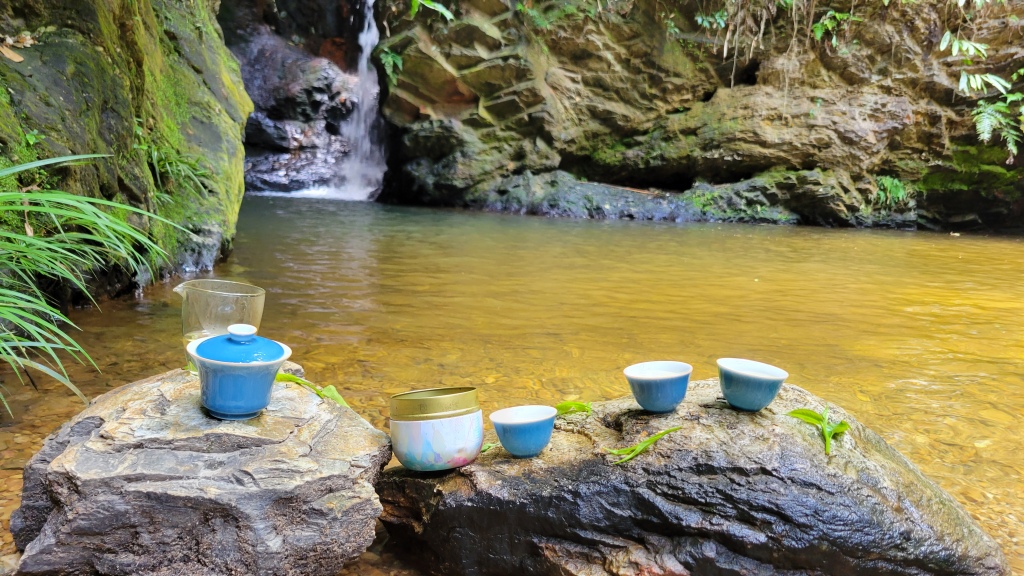
How might these teas from Thailand change or impact your tea education course?
Moving forward when I talk about tea regions I will be including and highlighting Thailand (among other South East Asian countries with ancient tea trees like Vietnam). I typically have thought of the more established regions such as China, Taiwan, Japan, and India for tea. But this experience has broadened my horizons and I hope it will broaden my students’ too.
I love hearing that, and look forward to seeing your course continue to be shaped by your travels! What do you hope your community takes away from your Thailand reflection?
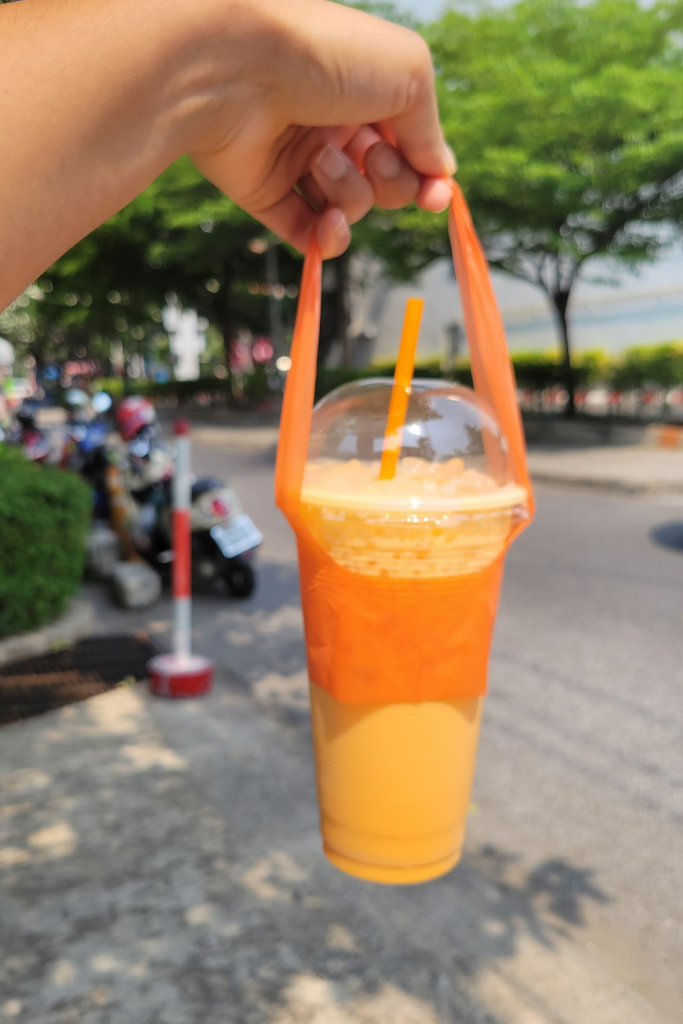
Two things. First, Thailand is a fairly new country to the tea world. Many people, including myself, have limited to no experience tasting Thai teas and only the Cha Yen (the bright orange Thai iced tea) comes to mind when Thailand is mentioned in the context of tea. While ancient tea trees have been there for centuries, they only began producing tea on a larger scale in the past few decades. However, Thailand produces some fantastic oolong, pu’er, and black and white teas. I want to bring some well-deserved recognition to the region by showing people that Thailand can make great teas with a unique terroir.
Secondly, I want to show people the heart, strength, and tenacity of the Yunnan-Thai people who, despite having a very difficult journey, have only kindness and gratitude in their hearts. They have channeled their energy into producing great teas for Thailand, and it is their time to shine.
There are so many wonderful people I would like to mention for their kindness and for making me feel so at home in Thailand – Ching Ching, P’Yee, P’Ammi, P’Horse, P’Phon, P’Kaan, P’Pond, and many, many others. From the bottom of my heart, khop khun mak ka.
CONCLUSION
Mona’s travels to Thailand not only brought the adventure that comes from sourcing tea but drew her deeper into family roots and the history and current stories of the Yunnan-Thai people. I always admire the illustrations Mona creates for the packaging of her teas.
For example, the Siam Silver is a drawing of Thai dance hands (plucking tea leaves) because the tea maker P’ Ammi is originally a Thai dance teacher who comes from a lineage of Thai musicians and dancers. It was only later in life that she learned how to make tea through her husband, but became very good at it very quickly! Mona thinks the art and precision of Thai dance helped her become a great tea maker.
The Khiri Gold is a drawing of the golden temple mentioned above in Mae Salong village, and the flower is the Put Tan flower (cotton rose) that is displayed at the front of Wang Put Tan.
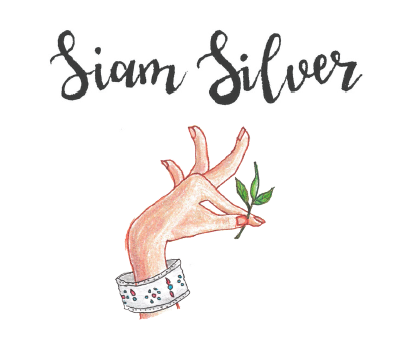

THAI TEA COLLECTION RELEASE
Mona is releasing a number of these teas permanently, alongside an adorable elephant tea pet and mini glass teapot. You can find the permanent collection on her website, and grab one fast before all the elephant tea pets find their new homes with tea drinkers around the globe!
Thank you to Mona for this wonderful interview and we hope you can enjoy the stories and offerings Mona has curated for the community!

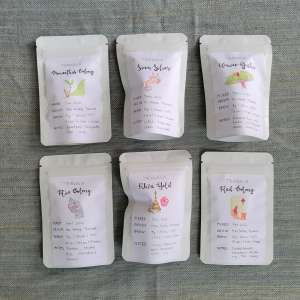
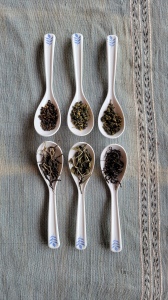
Join Mona Jhunjhnuwala
Website / Instagram / Facebook

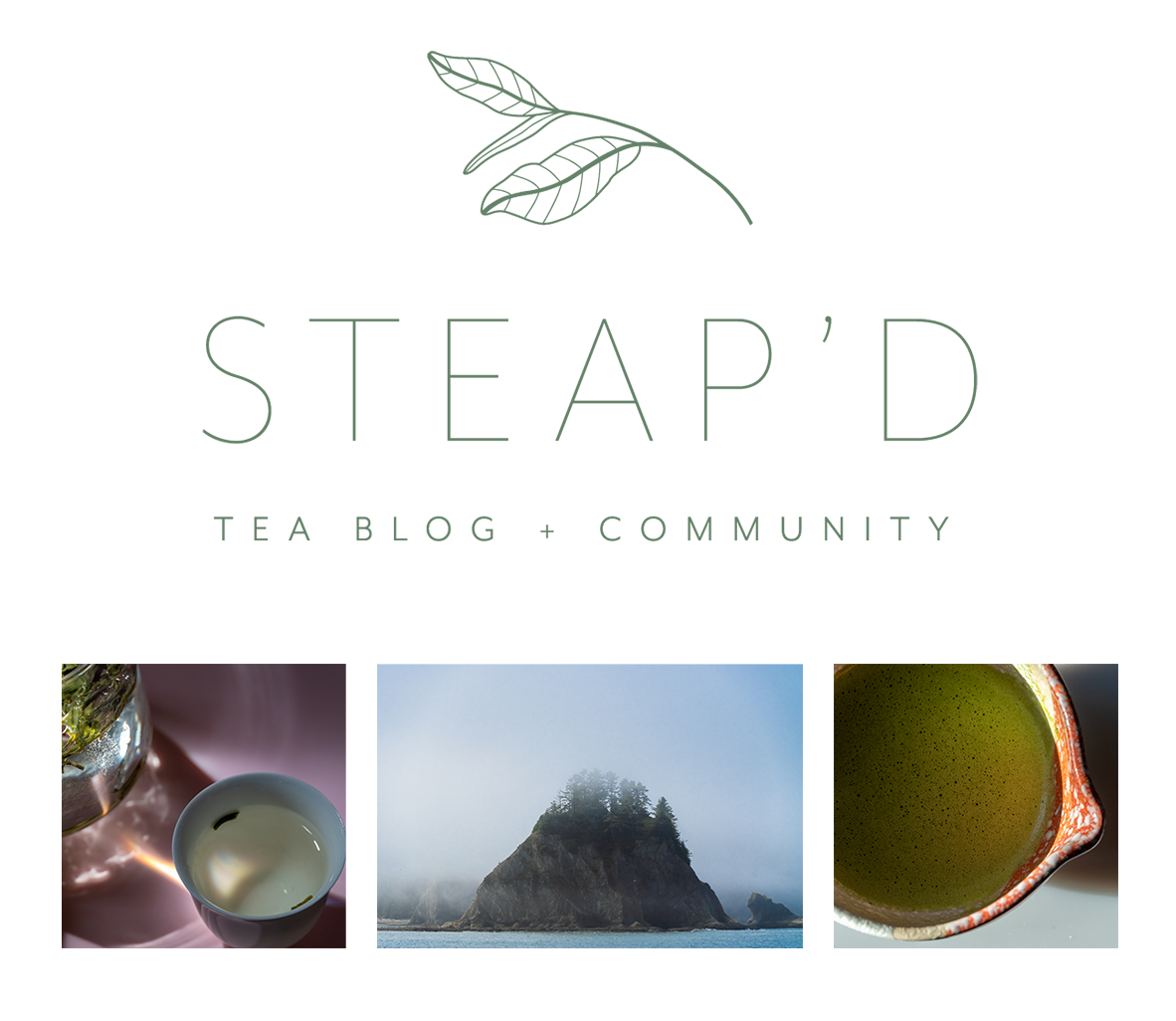
This was such a heartfelt read! Thanks Marco for putting it together, and Mona for sharing more with us about your adventures & heritage. Each of the teas in Teawala’s Thai collection have been absolutely incredible, and I hope everyone gets to enjoy them!
LikeLike